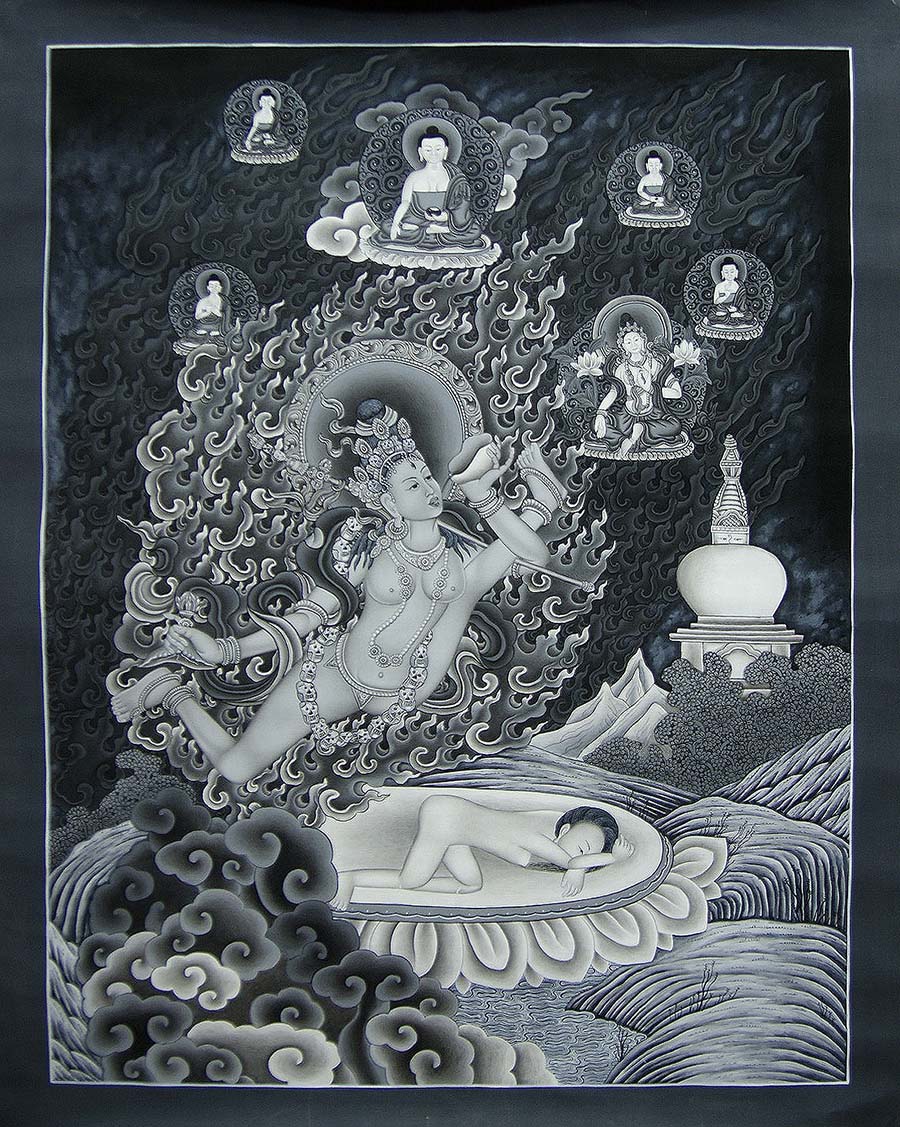

Ratnasambhava Thangka Painting
Ratnashambhava is head of the Ratna family. He is a Yellow in color. Ratnasambhava is the embodiment of the Jewel family and one of the members of Five Dhyani Buddhas.
About painting
This beautiful Thangka painting is hand painted by the Master Artist living in Bhaktapur, Nepal. It took several days to complete the thangka paintings.
Thangka paintings are the representation of traditional art culture and religion.
The painting features the Eight Great Bodhisattvas surrounding Ratnasambhava, two of them standing on the sides and holding the stems of lotus flowers in both of their hands.
The throne is decorated with a golden bar and features several mythical animals typical of the Tibetan Buddhist tradition.
He sits on lotus wearing the majestic crown and the eight jewel ornaments.
History of Ratnasambhava
The Nepalese Buddhists regard him as the Third Dhyani Buddha in order, and the earliest mention of his name may be found in the Guhyasamaja which is believed to have been composed circa 300 A.D.
He is the progenitor of the Ratnakula and is described widely in the Buddhist Tantric works. Out of all descriptions, the one given in the Pancakara section of the Advayavajrasahgraha is perhaps the best.
Origin of Ratnasambhava
Ratnasambhava originates from the yellow syllable Train placed on the orb of the sun on the southern petal.
He is yellow in color. His recognition symbol is the jewel and he exhibits the Varada Mudra. He represents the cosmic element of Vedans and is the embodiment of slander.
He presides over the blood in the human system and belongs to the Ratna family of deities. He possesses the knowledge of Samata and presides over the spring season.
Iconography
When represented, his color is yellow and he always faces the South.
His left hand rests on the lap with the open palm and exhibits the Varada Mudra or the gift-bestowing attitude.
His Vahana is a pair of lions, and the cognition symbol is the Jewel (Ratnacchata).
He is widely known and represented in Tibet and China.
To learn more about Ratnasambhava go through our blog post Emanations of Ratnasambhava.












